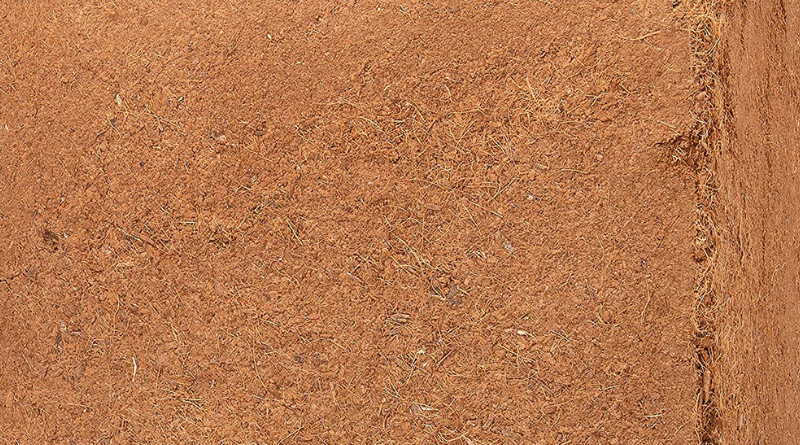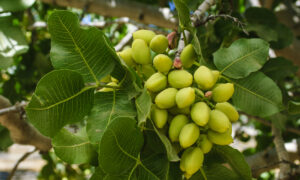We independently research, review, and recommend the best products. If you buy something through our links, we may earn a commission. Learn more.
I often receive messages from gardeners asking me how they can be more eco-friendly in the garden. It’s wonderful to hear that more and more green thumbs are thinking about sustainability, and there are plenty of things each of us can do to reduce our carbon footprint while maintaining a luscious and beautiful landscape. One quick win for anyone thinking about sustainability is to use an environmentally-friendly compost – and there’s no better option than Coco Coir.
For those who may not be familiar with Coco Coir, it is a 100% natural and sustainable growing medium made from the fibrous husk of coconuts. Unlike other composts, which are often made from peat or other non-renewable materials, Coco Coir is an eco-friendly option that is both renewable and biodegradable.
As someone who’s been using Coco Coir compost for over a year, I’ll take you through my experience of using eco-friendly compost, and how to get the most out of this sustainable formula.
Contents
What is Coco Coir compost?
Coco Coir is a natural, renewable material, extracted from the husk of the humble coconut. The beauty of coconut coir compost is that it’s pH neutral and doesn’t contain any harmful chemicals, making it the perfect substitute for peat moss, which we know can have some negative effects on the environment.
It’s worth noting that there are two different types of coco coir available on the market: brown and white. Brown coir is harvested from the husk of mature coconuts and is known for its high lignin content, which makes it perfect for use in soil conditioning. White coir, by contrast, is made from the husk of young, immature coconuts. This means that the white variety has a lower lignin content, making it better suited for seed-starting mixes. So, whether you’re looking to improve your soil or kickstart your seeds, there’s a coconut coir option to suit your needs.
What are the benefits of switching to coco coir compost?
Now we’ve covered the basics, let’s get into some of the benefits I experienced after moving to an eco-friendly compost. First and foremost, you’ll notice an improvement in the structure of your soil. Coco Coir helps to promote healthy root growth, making it a prime candidate for use in potting mixes.
What’s more, coconut coir compost is a top-notch water retention agent, with the ability to hold up to ten times its weight in water! This makes it a perfect choice for gardens in arid regions or for plants that need a consistent supply of moisture. Coco Coir also offers excellent aeration, which is vital for ensuring that your plants grow up big and strong.
Here’s a run-down of some of the key benefits:
- Excellent water retention: Coco Coir has a high capacity for water retention, making it an ideal soil amendment for plants that require consistent moisture
- Good drainage: Despite its high water retention, coco coir also provides good drainage, which prevents waterlogging and promotes healthy root growth
- pH neutral: Coco Coir is pH neutral, which means it won’t affect the pH of your soil, and is suitable for a wide range of plants
- Sustainable and eco-friendly: Coco Coir is a renewable resource that is much more sustainable than peat moss, which is often harvested from non-renewable peat bogs
How to use Coco Coir compost

When it comes to using coconut coir in gardening, there are many different ways you can put this versatile material to work.
One popular method is to mix it with soil to help improve soil structure and water retention. Coconut coir can also be used as a standalone growing medium, particularly for plants that thrive in well-draining conditions.
But that’s not all. Coconut coir is also a fantastic ingredient for compost, providing an excellent source of carbon, which is a must-have for breaking down organic matter. So whether you’re looking to boost your soil quality, grow your plants in a new medium, or create your very own compost, coconut coir is a natural and renewable option that’s well worth considering.
- Preparing coco coir: Before using coco coir, it’s important to prepare it properly. Start by soaking the coir in water for several hours, until it has expanded and is easy to work with. Then, be sure to rinse it thoroughly to remove any excess salt or other impurities
- Mixing coco coir into soil: Coco coir can be mixed into soil to improve its water retention and drainage. A good ratio to aim for is 30% coco coir to 70% soil, though this may vary depending on the needs of your plants
- Using coco coir as a soilless growing medium: Coco coir can also be used as a soilless growing medium for hydroponic or container gardening. Simply mix the coco coir with perlite or vermiculite to improve drainage and create a lightweight growing medium
How to get the most out of Coco Coir compost
If you’re thinking about switching to coconut coir compost, it’s essential to keep a few things in mind. Firstly, make sure to soak the coir in water before use to rehydrate it. This will ensure that it has maximum water retention capacity. Secondly, be mindful of the salt content of the coir, especially if you are using it in hydroponic systems. And Lastly, ensure that the coir is free of any contaminants before use.
To sum up, coconut coir is a superb natural and eco-friendly substitute for traditional soil amendments. With its ability to boost soil structure, promote water retention, and provide much-needed aeration, it’s no wonder that gardeners far and wide are turning to coconut coir as their go-to growing medium. By following the tips laid out in this guide, you too can learn how to make the most of this versatile and sustainable resource in your own gardening practices. So why not give coconut coir a try? Your plants (and the planet) will thank you for it!









